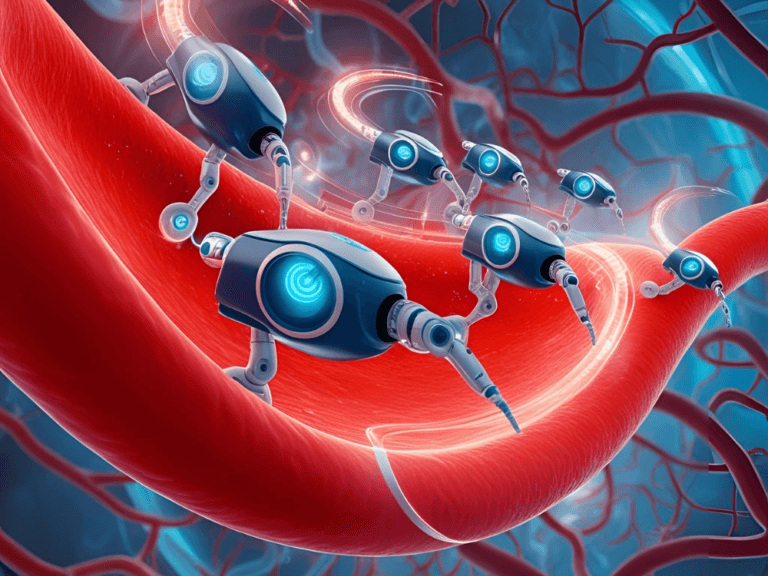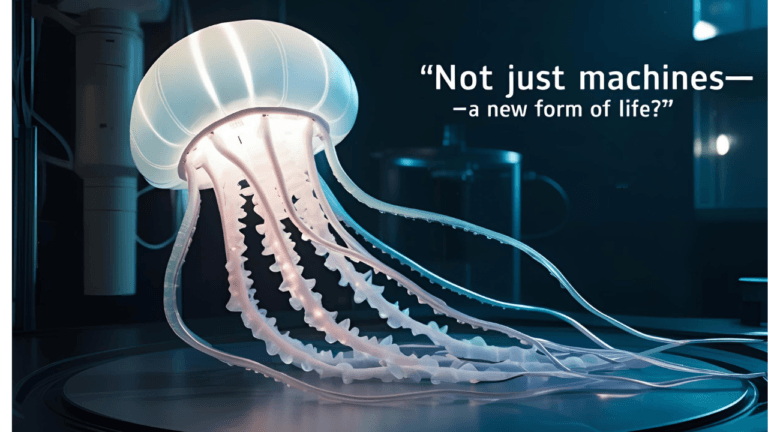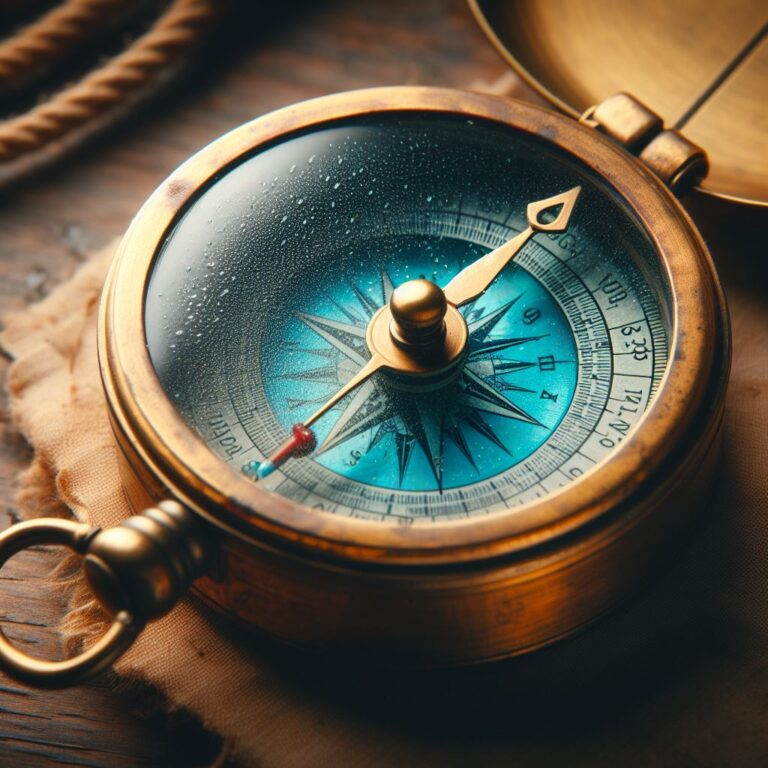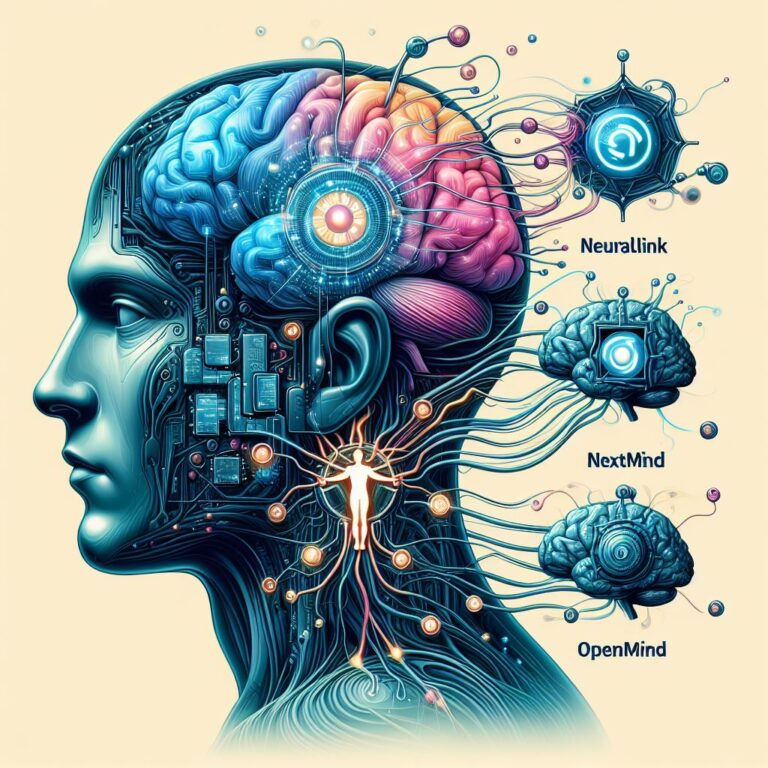Introduction
The advent of smart telescopes is transforming how amateurs and professionals explore the universe. Unlike traditional telescopes, which require manual adjustments and extensive knowledge of celestial coordinates, smart telescopes integrate AI, automation, and app-based controls to simplify stargazing and astrophotography.
How Smart Telescopes Differ from Traditional Telescopes
- Automated Object Detection: Smart telescopes use AI to identify celestial objects without needing manual star maps.
- Built-in Imaging Technology: Unlike traditional telescopes that require separate cameras, many smart models include high-quality sensors for astrophotography.
- App-Based Controls: Most smart telescopes can be controlled via smartphones or tablets, making sky navigation effortless.
- Live Image Processing: Advanced software enhances celestial images in real time, making deep-space observation accessible to beginners.
The Rise of AI-Powered Astronomy
With machine learning and AI, telescopes like the Unistellar eVscope eQuinox 2 and Vaonis Vespera can remove the effects of light pollution and enhance clarity. These innovations enable urban astronomers to view galaxies and nebulae previously obscured by artificial lights.
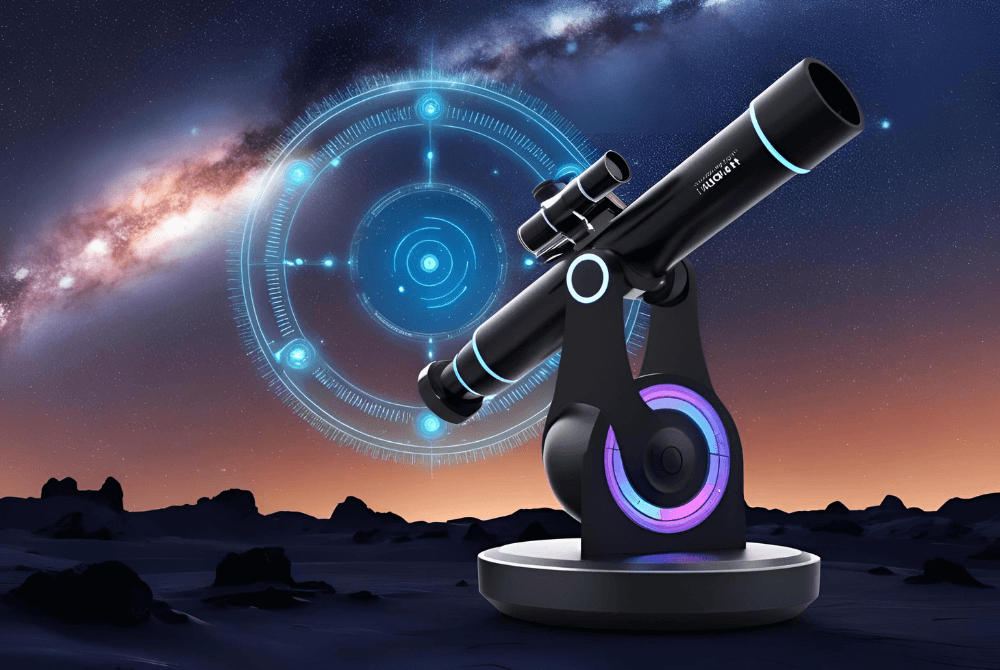
What is a Smart Telescope?
Definition and Core Functionalities
A smart telescope is an AI-driven optical device that automates celestial tracking, image enhancement, and navigation. Unlike traditional telescopes, which rely on manual calibration, smart telescopes use software and built-in sensors to simplify stargazing.
How Smart Telescopes Work
- AI-Assisted Object Recognition: Using machine learning, smart telescopes detect and label celestial bodies.
- Automated Star Tracking: Integrated GPS and motorized mounts track stars and planets as they move across the night sky.
- App Integration: Users control the telescope via an app, selecting objects to view and capture images effortlessly.
- Built-in Cameras: Unlike traditional telescopes that require separate DSLR or CCD cameras, many smart telescopes include high-resolution imaging sensors.
Types of Smart Telescopes
- Entry-Level Smart Telescopes – Ideal for beginners, offering plug-and-play operation with basic AI assistance (e.g., Celestron StarSense Explorer).
- Advanced Smart Telescopes – Feature-rich models designed for astrophotography and deep-sky observation (e.g., Unistellar eVscope 2, Dwarf 3 Smart Telescope).
How Smart Telescopes Work: The Technology Behind Them
Smart telescopes are revolutionizing astronomy by automating the complex processes that once required extensive knowledge and manual adjustments. From setting up the telescope to capturing high-quality astrophotography images, AI-powered telescopes leverage advanced technology to simplify celestial observation.
Automated Setup and Star Alignment
One of the biggest advantages of AI-powered telescopes is their ability to self-align with celestial objects automatically. Traditional telescopes require users to manually locate stars and input coordinates, but smart telescopes eliminate this hassle through:
- GPS Integration – Built-in GPS sensors determine the exact location and time, allowing the telescope to identify its position relative to the stars.
- Automated Star Detection – Using onboard AI and star databases, the telescope cross-references visible stars to calibrate itself.
- Quick Alignment Modes – Some models, like the Unistellar eVscope 2 and Vaonis Stellina, offer single-click alignment, making setup seamless for beginners.
Live Tracking and Object Recognition Using AI
A key feature of how smart telescopes work is their ability to track celestial bodies in real time. Unlike traditional telescopes that require manual adjustments, these smart devices use:
- AI Object Recognition – Built-in AI scans the sky and labels visible objects, from planets to nebulae.
- Motorized Mounts and Star Tracking – The telescope automatically adjusts its position to compensate for the Earth’s rotation, ensuring objects remain centered in the field of view.
- Light Pollution Reduction – Some AI-powered telescopes, such as the Dwarf 3 Smart Telescope, use computational enhancement to filter out light pollution, making deep-space observation possible even in urban environments.
Integration with Smartphones and Computers for Remote Control
Most AI-powered telescopes connect with smartphones, tablets, or computers, allowing users to control them remotely via dedicated apps. Features include:
- Wireless Connectivity (Wi-Fi/Bluetooth) – Users can operate the telescope from a distance, making it convenient for astrophotography.
- Augmented Reality (AR) Guides – Some apps provide AR overlays to help users locate constellations and planets in real time.
- Live Image Streaming – Advanced models allow for real-time sharing of celestial views to social media or cloud storage.
Astrophotography Capabilities: Built-in Cameras vs. DSLR Compatibility
Another aspect of how smart telescopes work is their imaging technology. Smart telescopes fall into two categories:
- Built-in Camera Models – Many smart telescopes, such as the Vaonis Vespera, come with dedicated high-resolution sensors optimized for capturing deep-sky images without needing additional equipment.
- DSLR-Compatible Models – Some models, like the Celestron NexStar Evolution, allow users to attach professional-grade DSLR cameras for enhanced astrophotography.
By combining AI-powered telescopes with advanced imaging and automation, smart telescopes make deep-space observation and astrophotography more accessible than ever.
Dwarf 3 Smart Telescope: A Breakthrough in Astronomy Tech
Overview of the Dwarf 3 Model and Its Standout Features
The Dwarf 3 Smart Telescope is the latest innovation from Dwarflab, designed to revolutionize amateur astronomy and astrophotography. This portable, AI-powered telescope builds upon the foundation of its predecessors but introduces significant advancements in imaging, tracking, and ease of use.
One of the standout features of the Dwarf 3 Smart Telescope is its 35mm aperture, which allows it to capture more light than previous models, making it ideal for deep-space imaging. The telescope is equipped with a 150mm focal length, providing a balance between field of view and magnification, enabling users to observe distant galaxies, nebulae, and star clusters with greater clarity.
Unlike traditional telescopes that require time-consuming manual adjustments, the Dwarf 3 integrates AI-assisted tracking and object recognition, automatically aligning itself with celestial objects without needing star maps or extensive user input. This feature makes it a top choice for beginners who want to start exploring the night sky immediately.
Additionally, the Dwarf 3 comes with an upgraded Sony IMX678 Starvis 2 sensor, known for its low-light performance. This sensor has larger 2μm pixels, allowing it to capture faint celestial objects with minimal noise. The built-in 128GB storage ensures that users can save high-resolution images and videos directly on the device, eliminating the need for external memory cards.
Another major improvement is its battery life, which has been optimized to last significantly longer than previous models, ensuring extended observation sessions without frequent recharging. The compact and lightweight design, weighing just 1.3 kg (2.9 lbs), makes it one of the most portable smart telescopes available today.
Key Improvements Over Previous Dwarf Models
Compared to its predecessor, the Dwarf 2, the Dwarf 3 Smart Telescope introduces multiple enhancements that make it a superior choice for astrophotography and general stargazing:
- Enhanced Optical Performance
- The larger 35mm aperture significantly improves light-gathering ability, resulting in brighter and more detailed images.
- The focal length has been extended to 150mm, allowing for improved zoom and sharper celestial object details.
- The Sony IMX678 Starvis 2 sensor has a higher dynamic range and reduced noise, making it more effective for capturing deep-space objects compared to the IMX415 sensor used in the Dwarf 2.
- Advanced Tracking and Stability
- The AI-powered object tracking system ensures that celestial objects remain in view even as the Earth rotates.
- Improved motorized mounts and gyroscopic stabilization allow for longer exposures without blurring, making it easier to capture distant galaxies and nebulae.
- Expanded Imaging Capabilities
- Unlike the Dwarf 2, which had limited astrophotography settings, the Dwarf 3 introduces narrowband and ND filters, giving users greater control over light pollution reduction and contrast adjustments.
- The 128GB internal storage (double the Dwarf 2’s 64GB) ensures astrophotographers can store more high-resolution images and videos.
- More Intuitive User Experience
- The redesigned mobile app provides an improved user interface for controlling telescope functions remotely.
- Faster setup time: The Dwarf 3 aligns itself automatically in under two minutes, compared to the longer setup times required for manual telescopes.
How It Compares to Other Leading Smart Telescopes
The Dwarf 3 Smart Telescope competes with some of the most well-known smart telescopes on the market, including the Unistellar eVscope 2, Vaonis Stellina, and Celestron NexStar 8SE. While it may not have the extreme power of high-end models, it stands out in several key areas:
| Feature | Dwarf 3 | Unistellar eVscope 2 | Vaonis Stellina | Celestron NexStar 8SE |
|---|---|---|---|---|
| Aperture | 35mm | 114mm | 80mm | 203mm |
| Focal Length | 150mm | 450mm | 400mm | 2032mm |
| Weight | 1.3 kg | 9 kg | 11 kg | 11.6 kg |
| AI-Powered Tracking | Yes | Yes | Yes | No |
| Built-in Camera | Yes | Yes | Yes | No (requires DSLR) |
| Best For | Beginners, hobbyists | Serious astrophotographers | Automated deep-sky imaging | Advanced manual stargazing |
The Dwarf 3 excels in affordability and portability, making it an excellent choice for casual users and beginners who want a hassle-free smart telescope with strong astrophotography capabilities.
Comparing Smart Telescopes: Best Models in the Market
Top Smart Telescopes of 2025
The market for smart telescopes has grown significantly, with models catering to different needs and budgets. Here’s a look at the best options available:
- Dwarf 3 Smart Telescope – Best Budget-Friendly AI Telescope
The Dwarf 3 is perfect for hobbyists and entry-level astrophotographers. It offers AI-powered object tracking, built-in storage, and a compact design that makes it easy to transport. Despite its lower price, it provides impressive deep-space imaging capabilities, making it a great alternative to high-end models.
- Unistellar eVscope 2 – Best for Serious Astrophotographers
The Unistellar eVscope 2 is a premium smart telescope known for its powerful AI-driven image enhancement and deep-space viewing capabilities. It has a 114mm aperture and a higher focal length, making it ideal for capturing detailed views of galaxies, star clusters, and nebulae.
- Vaonis Stellina – Best for Automated Astrophotography
The Vaonis Stellina is a fully automated astrophotography telescope with a sleek, futuristic design. Unlike traditional telescopes, it is controlled entirely via an app and requires no manual adjustments. Its built-in light pollution filter makes it an excellent choice for urban stargazers.
- Celestron NexStar 8SE – Best for Advanced Users Who Prefer Manual Control
The Celestron NexStar 8SE is a hybrid between a smart and manual telescope, offering advanced tracking but requiring user adjustments for optimal results. Its 203mm aperture makes it the most powerful telescope in this lineup, ideal for professional astrophotographers.
Which Smart Telescope is Best for You?
- For Beginners & Budget Buyers: Dwarf 3 Smart Telescope (affordable, lightweight, easy to use).
- For Urban Observers: Vaonis Stellina (automated, no manual setup, excellent image processing).
- For Deep-Sky Astrophotographers: Unistellar eVscope 2 (high-resolution imaging, AI-enhanced).
- For Advanced Users & Manual Control Enthusiasts: Celestron NexStar 8SE (high power, best for experienced astronomers).
Smart Telescopes vs. Traditional Telescopes: Which One Should You Choose?
When it comes to choosing a telescope, one of the biggest debates among astronomy enthusiasts is “smart telescope vs traditional telescope.” While traditional models have been the go-to option for decades, the rise of AI-powered, automated telescopes has significantly changed how people explore the night sky.
So, how do these two types compare? Should you opt for an automated telescope or a manual telescope? Let’s break it down.
Ease of Use: Automation vs. Manual Adjustments
One of the biggest advantages of smart telescopes is their ease of use. Traditional telescopes require users to:
- Manually align the telescope with celestial coordinates.
- Adjust focus and tracking settings based on Earth’s rotation.
- Learn how to use star charts or external software for proper positioning.
In contrast, automated telescopes handle these tasks with minimal user effort. Smart telescopes like the Dwarf 3, Vaonis Stellina, and Unistellar eVscope 2 come with AI-powered object tracking, automatically finding and locking onto celestial objects with precision. This makes them ideal for beginners who don’t want to spend hours aligning their scope before they can start observing.
However, manual telescopes give astronomers full control over adjustments, making them better for those who enjoy a hands-on approach to stargazing. Advanced users may prefer a manual telescope with computerized tracking, such as the Celestron NexStar 8SE, which offers high precision without full automation.
Astrophotography: Built-in vs. External Cameras
A major difference between smart and traditional telescopes is how they handle astrophotography.
- Smart telescopes come with built-in cameras and image processing, often featuring AI-powered astrophotography enhancements to reduce noise and improve image clarity. They allow users to capture celestial images without needing extra gear. For example, the Unistellar eVscope 2 has an advanced low-light Sony sensor, making it perfect for deep-space imaging.
- Traditional telescopes, on the other hand, do not have built-in cameras. If you want to take astrophotography seriously, you’ll need an external DSLR or astrophotography camera. While this offers greater customization, it also requires additional equipment like equatorial mounts, image stacking software, and filters.
For casual astrophotographers, a smart telescope is a more convenient option. However, professional astrophotographers who want maximum flexibility may still prefer the manual approach with high-end traditional telescopes.
Portability and Setup Time: Smart Telescopes Are Faster and More Compact
Another major factor in the “automated telescope vs manual telescope” debate is portability.
- Smart telescopes are usually lighter and more compact, designed for easy transport. Many models, such as the Dwarf 3 Smart Telescope, weigh under 2 kg (4.4 lbs) and can be set up in just a few minutes.
- Traditional telescopes (especially those with large apertures) tend to be heavier and bulkier. Setting them up can take 20-30 minutes if manual alignment and calibration are required.
If you need a travel-friendly telescope, an automated model is the better choice. However, for long-term backyard astronomy, a traditional telescope with a large aperture will provide the best views.
Pricing & Value for Money: Are Smart Telescopes Worth It?
The cost of smart telescopes can be a deciding factor for many buyers. While they are more convenient, they tend to be more expensive than traditional telescopes with similar optical power.
| Telescope Type | Price Range | Pros | Cons |
|---|---|---|---|
| Smart Telescope | $400 - $4,000 | Automated tracking, built-in camera, compact | Expensive, limited manual control |
| Traditional Telescope | $200 - $2,500 | Better optics per dollar, customizable for astrophotography | Requires manual setup, learning curve |
For beginners or those who prioritize ease of use, smart telescopes are absolutely worth it. But for those who want a cost-effective way to get the best optical performance, traditional telescopes remain a strong option.
The Role of AI in Modern Astronomy
With advancements in artificial intelligence, AI in telescopes is transforming the way we explore the cosmos. From automated celestial tracking to AI-powered astrophotography, artificial intelligence is making astronomy more accessible and precise than ever before.
How AI Enhances Stargazing and Celestial Tracking
AI is revolutionizing how telescopes locate and track celestial objects. Instead of manually adjusting a telescope based on star charts, modern AI-powered telescopes can:
- Automatically recognize stars, planets, and deep-space objects in real-time.
- Predict movement patterns of objects based on orbital mechanics.
- Compensate for atmospheric turbulence, improving clarity in live images.
For example, smart telescopes like the Unistellar eVscope 2 use AI to enhance faint celestial objects, making deep-space galaxies and nebulae brighter and clearer even in light-polluted areas.
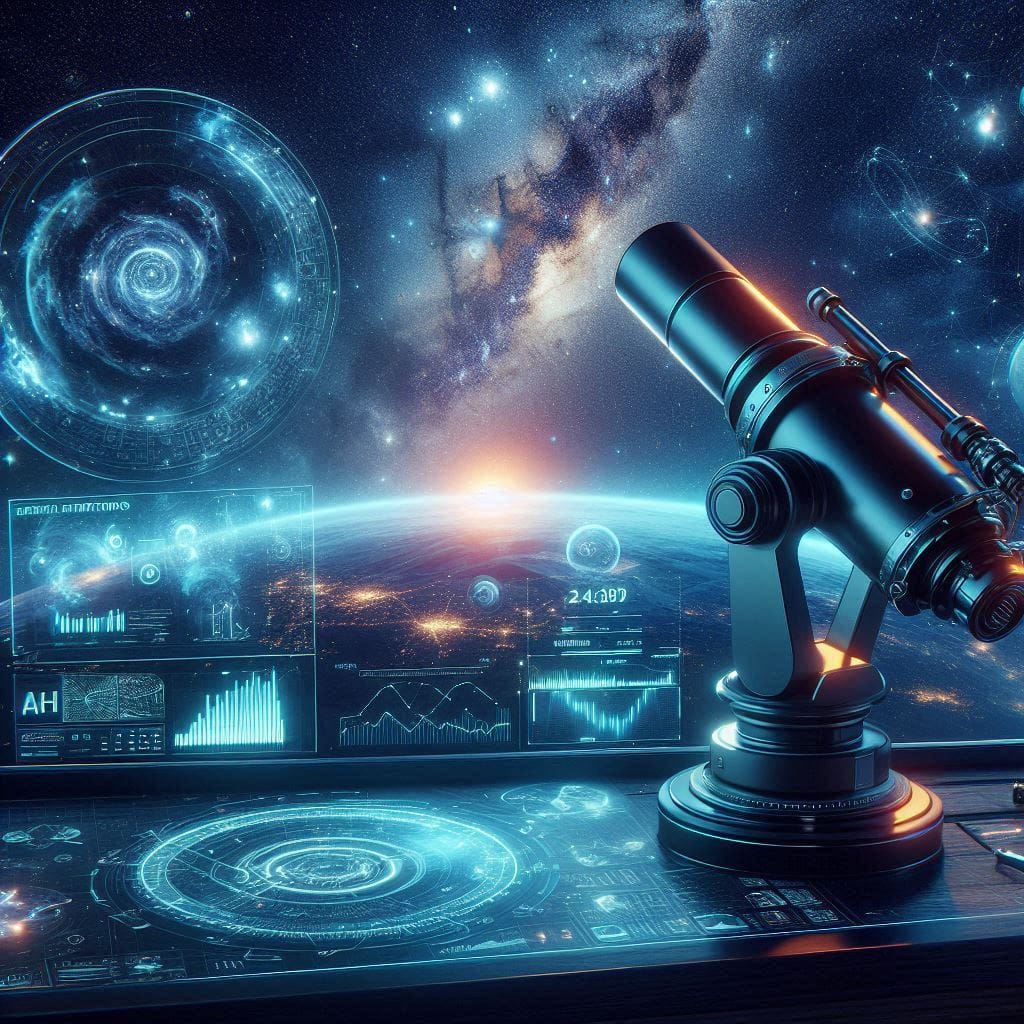
Machine Learning in Deep-Space Imaging
AI-driven machine learning algorithms are now being used to process astronomical images. Traditionally, astronomers had to take multiple images of an object and stack them manually to reduce noise. AI simplifies this process by:
- Automatically stacking and aligning images for astrophotography.
- Enhancing faint signals from deep-space objects by learning patterns in telescope data.
- Filtering out atmospheric distortions using AI-enhanced post-processing.
For instance, NASA and ESA use AI-powered astrophotography tools to process images from telescopes like the Hubble Space Telescope and James Webb Space Telescope (JWST). These AI algorithms help remove interference and highlight faint cosmic structures.
Future of AI-Powered Telescopes: Mapping Exoplanets?
As AI technology advances, AI-powered telescopes may play a crucial role in exoplanet discovery. Future telescopes could use AI to:
- Detect faint planetary transits in distant star systems.
- Analyze light spectra to identify exoplanet atmospheres.
- Automate large-scale sky surveys to discover new celestial bodies faster.
Projects like the Nancy Grace Roman Space Telescope (launching in 2027) are already integrating AI to help map exoplanets in our galaxy. In the future, AI-powered telescopes might even assist in the search for extraterrestrial life by analyzing biosignatures in exoplanet atmospheres.
Both traditional and smart telescopes have their strengths, but AI-driven innovations are shaping the future of astronomy. Whether you’re a casual stargazer or a professional astrophotographer, understanding the differences between “smart telescope vs traditional telescope” and the role of “AI in telescopes” can help you make the right choice.
As AI continues to evolve, the possibility of AI-powered astrophotography improving deep-space exploration is becoming a reality. Who knows? The next breakthrough in astronomy might come from an AI-driven telescope discovering a new Earth-like exoplanet! 🚀🔭
Astrophotography with Smart Telescopes: How to Capture Stunning Images
Astrophotography has traditionally required high-end cameras, complex mounts, and extensive post-processing. However, smart telescope astrophotography has changed the game by making deep-space imaging accessible, automated, and beginner-friendly.
Whether you’re capturing the craters of the Moon, the rings of Saturn, or distant nebulae, modern AI-powered telescopes simplify the process while delivering stunning, high-resolution images. This guide will walk you through:
✅ How to capture celestial objects step by step
✅ Best telescope settings for deep-space vs. planetary photography
✅ AI-enhanced image processing for astrophotography
Step-by-Step Guide to Capturing Celestial Objects
To take breathtaking astrophotography images with a smart telescope, follow these steps:
Step 1: Choose the Right Smart Telescope
For smart telescope astrophotography, models like the Unistellar eVscope 2, Vaonis Stellina, and Dwarf 3 Smart Telescope stand out due to their:
- Built-in cameras (removing the need for an external DSLR).
- AI-assisted image stacking for clear, noise-free results.
- Automated tracking systems that follow celestial objects smoothly.
Step 2: Set Up in an Ideal Location
- Avoid light pollution by finding a dark-sky location. Use apps like Light Pollution Map to check sky conditions.
- Stabilize your telescope on solid ground to avoid vibrations.
Step 3: Use AI-Powered Object Tracking
- Most smart telescopes come with AI-based auto-alignment, making it easy to find planets, galaxies, and nebulae.
- Apps like Unistellar’s Star Discovery or Vaonis Stellina App let you select celestial objects, and the telescope will autonomously track them.
Step 4: Adjust Camera Settings for Optimal Image Quality
Your settings should vary depending on whether you’re shooting a planetary object (e.g., the Moon, Jupiter, Saturn) or a deep-space object (e.g., galaxies, nebulae).
Best Settings for Deep-Space vs. Planetary Photography
| Category | ISO | Exposure Time | Stacking Needed? | Example Objects |
|---|---|---|---|---|
| Planets | 100-400 | 1/100s - 1/1000s | No | Moon, Jupiter, Saturn |
| Deep-Space Objects | 800-3200 | 5s - 30s | Yes | Orion Nebula, Andromeda Galaxy |
- For planetary photography, keep the ISO low and use shorter exposure times to prevent overexposure.
- For deep-space astrophotography, increase ISO and exposure time to capture more light. AI-powered telescopes automatically use image stacking to remove noise and enhance clarity.
Editing Astrophotography Images Using AI-Enhanced Software
Once you’ve captured raw images, AI-powered astrophotography software can refine them further. Popular tools include:
- PixInsight – Uses AI to enhance deep-space images by reducing noise and sharpening details.
- Adobe Photoshop (Astrophotography Plugins) – Advanced AI-powered denoising and contrast adjustments.
- DeepSkyStacker – Specialized software for stacking multiple images to increase clarity.
Smart telescopes often have built-in AI algorithms that automatically stack and process images in real-time, giving you a final photo with minimal manual effort.
The Future of Smart Telescopes: What’s Next?
As technology advances, the future of smart telescopes looks incredibly promising. With improvements in AI-driven optics, augmented reality integration, and deep-space observation capabilities, the next generation of telescopes will revolutionize amateur and professional astronomy.
- AI-Driven Optics and Advanced Automation
AI has already transformed how smart telescopes track, focus, and enhance celestial objects, but future advancements will take automation even further:
✅ Self-learning AI will improve tracking accuracy by predicting the movement of celestial objects with greater precision.
✅ Adaptive optics will adjust for atmospheric distortion, allowing for clearer images from the ground.
✅ AI-powered spectral analysis may help astronomers detect exoplanet atmospheres more efficiently.
- Augmented Reality for Interactive Astronomy
A next-gen telescope technology that will reshape astronomy is augmented reality (AR) integration. Imagine being able to:
👁️ View real-time celestial overlays on your phone or AR glasses while looking through the telescope.
🪐 See live data about planets, stars, and galaxies projected directly into your field of view.
🔭 Use AI-powered voice assistants to ask your telescope to find and display specific cosmic objects.
Companies like Vaonis and Unistellar are already developing AR-powered telescope interfaces, making interactive astronomy a reality.
- AI-Generated Celestial Maps and Deep-Space Observation
One of the most exciting prospects for the future of smart telescopes is the creation of AI-driven celestial maps.
- AI will continuously scan the sky, mapping celestial objects in real-time.
- These data-rich maps will allow astronomers to predict new exoplanets and potentially identify unknown cosmic phenomena.
- Autonomous deep-space telescopes may be deployed in space, continuously analyzing the universe and transmitting data back to Earth.
Conclusion: The Rise of AI-Powered Astronomy
The evolution of smart telescopes has made astronomy more accessible than ever before. Whether you’re a beginner or an experienced astronomer, AI-powered telescopes remove complexity while enhancing capabilities.
Key Takeaways
- Smart telescope astrophotography is now easier thanks to built-in cameras, AI-enhanced image stacking, and automated tracking.
- The best telescope for astrophotography depends on whether you prioritize ease of use (smart telescopes) or full manual control (traditional telescopes).
- The future of smart telescopes includes AI-driven optics, AR integration, and autonomous deep-space mapping.
Why the Dwarf 3 and Other AI-Powered Telescopes Are Revolutionizing Astronomy
The Dwarf 3 Smart Telescope, alongside models like the Unistellar eVscope 2 and Vaonis Stellina, is proving that AI-powered telescopes are the future of space observation. Their ability to automatically find, track, and photograph celestial objects is changing how we interact with the night sky.
Call to Action: Choosing the Right Smart Telescope for Your Needs
If you’re looking for the best telescope for astrophotography, consider your needs:
🔹 For easy astrophotography: Go for Dwarf 3 or Unistellar eVscope 2.
🔹 For high-resolution deep-space imaging: Choose Vaonis Stellina.
🔹 For a mix of manual and AI automation: Try the Celestron NexStar series.
With AI rapidly advancing, the next-gen telescope technology promises to make space exploration more exciting and immersive than ever before. The universe is now just a tap away! 🌌🔭🚀
Explore More Frontiers of Space and Technology
If you’re fascinated by the wonders of smart telescopes and the cosmos, dive deeper into these captivating topics:
- AI in Space Exploration
Discover how artificial intelligence is transforming our journey into the stars. - Exploring Exobiology and Astrobiology
Uncover the search for life beyond Earth and the science of alien worlds. - Tethered Satellites
Learn about the innovative technology of tethered satellites and their role in space missions. - The Future of Space Mining
Explore how humanity is preparing to harvest resources from asteroids and other celestial bodies.
Why Stop Here?
The universe is full of mysteries waiting to be uncovered. Keep exploring to stay ahead of the curve in space technology and discovery!

